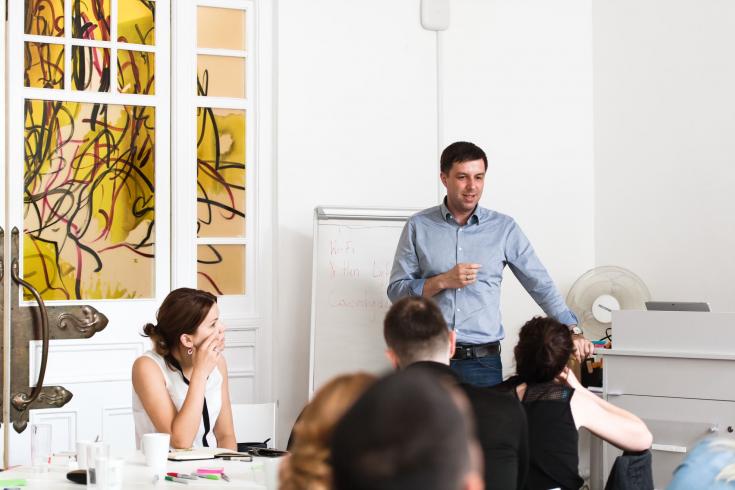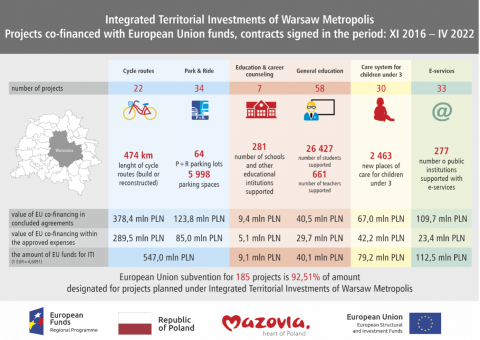Integrated strategies for better place-based policies

Since several years, the European Union is committed to engage policy makers at regional and local level in designing regional policies for a sustainable and integrated territorial development.
With specific policy approaches and tools created for allowing flexibility across different EU Funds, the EU promotes place-based policies characterised by multisectoral integration and multistakeholder governance in a result-oriented logic. Some key pillars of this paradigm have been developed in the past programming period, and are now being promoted more and more within the Cohesion Policy.
Sustainable Urban Development (SUD) is an integrated and place-based approach to territorial development, where integration implies multi-sectoral policy, multi-level and multi-stakeholder governance, multi-territorial and community-led strategy.
It is a strategic approach that offers many opportunities for research and innovation policies as it can complement and reinforce the place-based approach of the smart specialisation strategy (S3).Integrated Territorial Investment (ITI) is a tool to implement territorial strategies in an integrated way.
It allows Member States to implement Operational Programmes in a cross-cutting way and to draw on funding from several priority axes of one or more Operational Programmes to ensure the implementation of an integrated strategy for a specific territory.
As such, the existence of ITI both provides flexibility for Member States regarding the design of Operational Programmes and enables the efficient implementation of integrated actions through simplified financing. The European Commission provides support to regions willing to set up ITIs in the form of networking and capacity-building events in particular through the Urban Development Network.
The key elements of an ITI are:
- a designated territory and an integrated territorial development strategy;
- a package of actions to be implemented;
- and governance arrangements to manage the ITI.
Community led local development (CLLD) may be an element that can be used as one of the building blocks to implement an ITI. The main difference between an ITI and CLLD is that it is a strictly bottom-up approach. It is the local action group that determines the content of the local development strategy and the operations financed under it.
The main objectives of a CLLD as a development tool are:
- to encourage local communities to develop integrated bottom-up approaches in circumstances where there is a need to respond to territorial and local challenges calling for structural change;
- to build community capacity and stimulate innovation (including social innovation), entrepreneurship and capacity for change by encouraging the development and discovery of untapped potential within communities and territories;
- to promote community ownership by increasing participation within communities and build the sense of involvement and ownership that can increase the effectiveness of EU policies;
- to assist multi-level governance by providing a route for local communities to fully take part in shaping the implementation of EU objectives in all areas.
Interreg Europe projects involved in ITI and CLLD
Interreg Europe projects’ partners in research and innovation have experimented Integrated Territorial Investment (ITI) and Community led local development (CLLD) and to design and implement integrated strategies to respond to local challenges.
Explore some examples below:
In COHES3ION, the Integrated Territorial Investments for Warsaw Metropolis shows the cooperation of 40 communes of the metropolitan area of Warsaw to achieve a common strategy for an effective use of Integrated Territorial Investment (2014-2020).
The projects promoted through the ITI initiative focus on 3 main areas: in the sector of public e-services, the Virtual Functional Area and the E-care system will be developed by 2022; in the sector low-emission transport, 471 km of bicycle routes and 33 projects of parking lots have been produced; in the sector of general and pre-school education, 1,743 new pre-school places for children have been created and 242 educational institutions supported.
Such large cooperation involves different scales of local government (cities, counties, and communes) and creates new territorial relations, fostering integration, reducing competition between municipalities, and providing an integrated solution for common problems (see below the interview with the good practice owner).
The Integrated Territorial Investments for Warsaw Metropolis (COHES3ION)
What are the main benefits of Integrated Territorial Investments (ITI)?
The main advantages of Integrated Territorial Investments are to stimulate cooperation between local government units forming the Warsaw Functional Area and to draw their attention to common strengths and common problems. Integrated Territorial Investments offer an opportunity to improve the conditions and quality of life of the inhabitants.
Moreover, the activities under the Integrated Territorial Investments facilitated the joint use of funds from the European Social Fund (ESF+), the European Regional Development Fund (ERDF) and national funds, which enabled efficient implementation of projects exceeding the administrative boundaries of individual territorial units.
The amount allocated to the implementation of Integrated Territorial Investments was over EUR 167 million and came from the Regional Operational Program of the Mazowieckie Voivodeship 2014-2020. The signing of the agreement and the creation of partnerships by 40 communes and the joint investment strategy allowed for the implementation of tasks and the drawing of common benefits in the form of completed projects for all participants.
The attached infographic presents the effects of the ITI implementation by the municipalities of the Warsaw Functional Area. Data as at the end of April 2022.

What recommendations would you give to other regions aiming to develop Integrated Territorial Investments (ITI)?
The key is to set common priorities for action that are acceptable to all partners in the partnership. Interested participants should know their needs so that future investments have a positive impact on the improvement of the living conditions and quality of life of the inhabitants as well as on the functionality of the area.
It is very important to keep your word and stick to the agreed terms of cooperation. This allows you to build mutual trust. The partnership leader plays a key role in this respect, which often is a city with a higher level of social and economic development. The leader must remember to treat all partners equally, also in the context of his own potential.
The development of the strategic document should take place through the dialogue of the parties involved and take into account the need to solve specific economic, environmental, climate and social problems. An extended approach should be applied, going beyond a given local government unit, so as to increase the competitiveness and attractiveness of the region and improve the quality of life of the inhabitants.
When looking for inspiration in solving problems, you can use examples of good practices of Integrated Territorial Investments already implemented in the 2014-2020 programming period.
In ECO CICLE, the development of cycling routes in the province of Cádiz through an Integrated Territorial Investment promotes the development of a network of cycle routes and cycling tourism at provincial level.
The Integrated Territorial Investment (ITI) was applied on the territory to promote the EuroVelo 8 route development, to foster opportunities for employment around cycle tourism, and to offer alternative forms of tourism (e.g. bird-watching, hiking, etc.) while facilitating access to natural parks and strengthening connections between different municipalities.
In BEYOND EDP, under the LEADER initiative, Local Action Groups (LAGs) are not-for-profit structures that are formed by multiple local stakeholders—public institutions, private actors, universities, civil society—and are operating under a bottom-up approach to elaborate regional rural development plans. LAGs can apply to the European Agricultural Fund for Rural Development (EAFRD) to support the implementation of regional rural development plans.
The experience of the LAG TAGUS is indicative of a possible path for LAGs to design and implement their own Smart Specialisation Strategies (S3). LAGs are efficient structures to identify weaknesses in the rural innovation system and finding possible solutions to address those weaknesses.
In INNOTRANS, the program Ekologis is an integrated strategy to communicate and to promote urban consolidation centres (UCCs) for logistics companies in Prague, Czech Republic. In the city of Prague, logistics vehicles contribute to a large part to traffic congestion and traffic emissions. In the first phase of the program Ekologis, a communication campaign was launched to raise awareness for logistics companies of their impact on the city. In the second phase, an urban consolidation centre was created.
The urban consolidation centre provides a logistical hub in the city to further distribute goods with electric vehicles. The program’s objectives are to reduce traffic congestions, lower traffic emissions, and improve logistics. The good practice demonstrates the importance for integrated strategies that combine communication campaigns to change attitudes and concrete solutions for urban challenges as complex as urban logistics.
In RUMORE, Milano Metropoli Rurale is an integrated policy strategy that aims to reinforce rural-urban linkages and rural innovation capabilities in the Milan metropolitan area. Peripheral rural areas in the Milan metropolitan region are under strong urban and infrastructural pressures thus a balanced economic development approach is needed.
The stakeholders and beneficiaries are public administrations, the Municipality of Milan, the Metropolitan Authority, the Regional Authority, and the Rural Districts, which are clusters of companies operating in the rural areas. Milano Metropoli Rurale is an Action plan consisting of 118 pilot projects amounting up to 171 million euros. Metropolitan regions that aim to foster rural-urban linkages could benefits from learning from this good practice.
In INNOVASPA, the development of the innovative health tourism destination in Birštonas city describes the importance to develop an integrated strategy to promote health tourism. Birštonas city municipality positioned itself as a family wellness and leisure destination. The city implemented an integrated strategy including communication campaigns, the promotion of medical tourism, investing in health-focused amenities such as parks, walking paths, medical spa services, and sustainable mobility.
The City of Birštonas experienced the highest tourist growth among Lithuanian resorts in 2017. The good practice highlights the importance to have a clear strategy and vision for the municipality. This vision for the future must be collective and must rally quadruple helix stakeholders and engage civil society in order to be successful.
In URBAN M, the City of Zagreb has introduced a policy change to foster the development of crafts and start-ups using makerspaces and co-working spaces. The partner from Croatia was inspired from the STEAMHouse at Birmingham City University, FabLab Lisboa in Lisbon and FabLab Lazio in Rome. They explored how to better use of European structural and investment funds (ESIF) and Integral territorial investment (ITI) of the agglomeration of Zagreb for development of maker spaces.
Further readings
Read the Handbook of Sustainable Urban Development Strategies
Learn more about the Urban Development Network
To know more about Integrated Territorial Investment (ITI)
To know more about Community led local development (CLLD)
